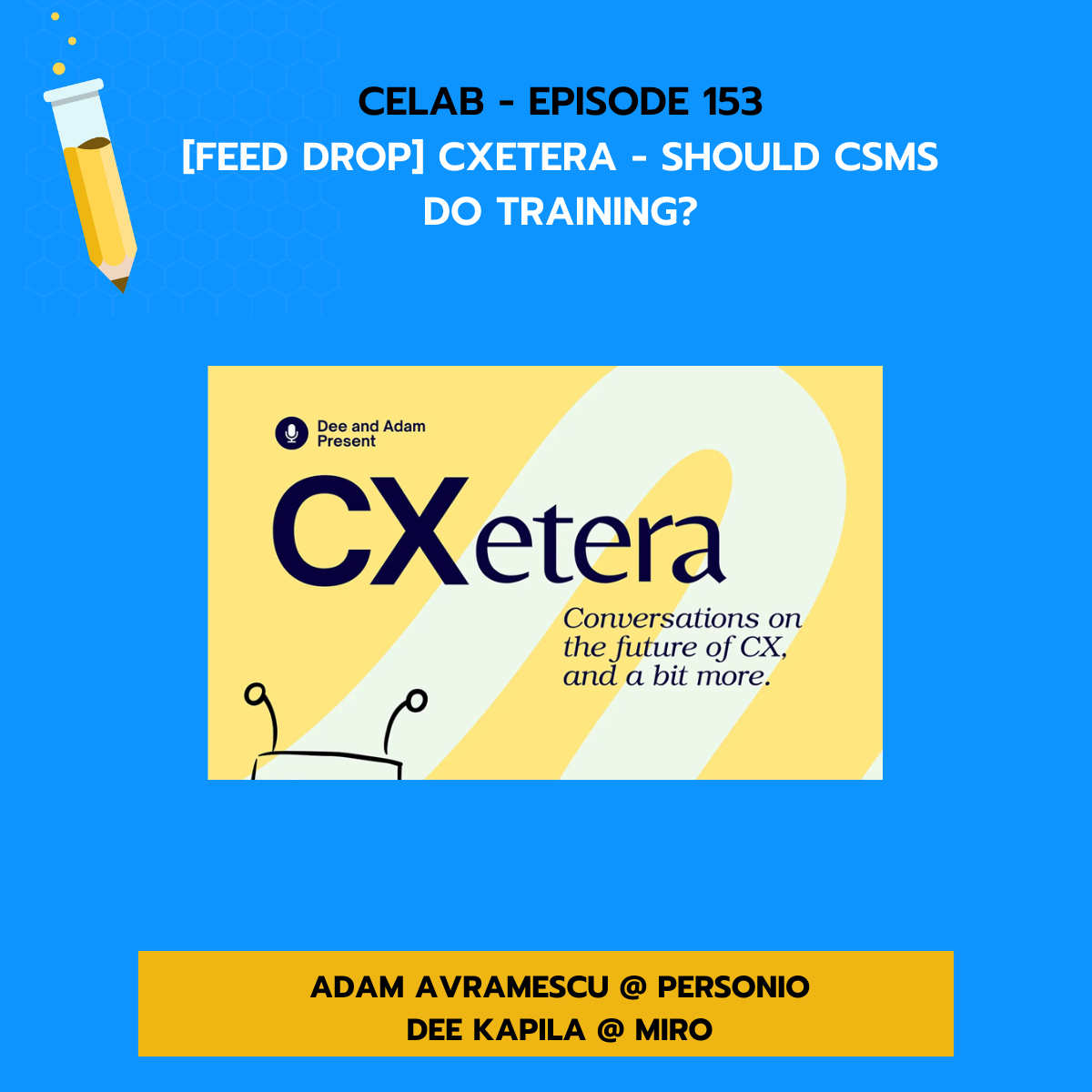What trends are we seeing in the field of Customer Education? Join us as we chat with Linda Schwaber-Cohen from Skilljar. We talk starting with scale, federated search, free vs paid training, and measuring the value of training (with data!).
 Linda Schwaber-Cohen
Linda Schwaber-Cohen
Linda leads Product Marketing and Customer Education at Skilljar, so she knows quite a bit about the Customer Education space! In this episode, she walks us through the trends she’s been seeing in the market as well as in Skilljar’s customer base.
One trend Linda highlights is that Customer Education teams are increasingly “starting with scale,” or in other words, building Customer Education programs that address broad audiences from the onset. This includes formats like online academies, help centers, and video, which can all scale to thousands or millions of end users.
Previously, Customer Education programs would start with low-scale activities like instructor-led trainings, one-to-one sessions with trainers or product experts, or classroom sessions. This has been true either because the technology to develop more scalable trainings wasn’t accessible, or because it was the easiest way to start training customers out of habit.
But that’s not cost effective, and it leaves many customers in the dark. So now companies are starting with more scalable, on-demands approaches. This is especially helpful as our customers onboard new users, who all need training at different times and paces.
The second trend Linda discusses is the move toward federated search. Increasingly, Customer Education programs implement a search tool that will search across multiple Customer Education properties – online academy content, help center articles, community-generated posts, blogs, and more. Gone are the days of each property having its own, isolated search. This improves discoverability of content wherever the customer is searching for it. This way, customers won’t need to know where to search for what they’re looking for, get frustrated, and give up (or angrily contact your customer support team).
She also discusses the advantages and challenges around adding federated search and help content directly into your software product. Often this requires getting buy-in from Product teams who see help content or training as a failure of the product to be intuitive.
The “in-product search” conversation ties into the idea of offering freemium models, or paid offerings, for training. Often when you’re bringing in revenue, that makes it easier for you to get the prioritization from cross-functional teams like Product and Marketing, or to get Product Management resources on your own team.
Linda talks about how she sees more sophisticated training teams offering paid education programs. Because they bring in revenue, they often get treated more as a product in and of themselves, instead of as a support tool for the software. While it’s still not common for many new Customer Education teams in SaaS to charge, it’s very common in the Education Services world, and Linda sees a hybrid model work in practice.
One thing she’s seeing is more interesting ways to attach training to premium support models and product subscriptions. For example, some companies create certification programs or premium education programs that aren’t completely customized to an individual account, but are available to a certain tier of customers to attend.
The last trend that Linda covers is the emergence of data-driven approaches. It’s becoming more common for Customer Education teams to collect, and use, more data to inform their approach. In the past, most training teams would collect cursory, activity-based data (like training survey scores, attendance rates, and revenue).
Now, Customer Education teams are using data to prioritize content – for example, what are the top customer search terms, and can those be used to create new help or education content? And when customers find specific pieces of content, do they find them helpful? Bounce rate data in a web analytics tool can give you that information.
But many of the metrics that we’ve historically looked at are – in her view – vanity metrics. For example, looking at bounce rates or completion rates without trying to understand the broader story around those numbers won’t be useful in proving the value of Customer Education to your business.
To get a seat at the bigger table, we have to stop looking at training data in a silo and start comparing it to business metrics such as product adoption, churn, renewal, expansion, support deflection, and so on.
This is also why LMS platforms increasingly integrate with core business systems like CRMs. If you can look at learning data in the same place as customer data, and analyze the two together, you have a better picture of what training is actually doing for your customers.

This episode is a "feed drop" or crossover episode featuring Adam Avramescu and Dee Kapila's new show - CXetera! As our network grows, we...

As the year comes to a close, we reflect on the top episodes of 2024 and make some bold predictions for the year ahead....

In business, the need for engaging learning experiences is staggeringly important. Yet the “how” is elusive. Conventional educational approaches don’t work well. You can...